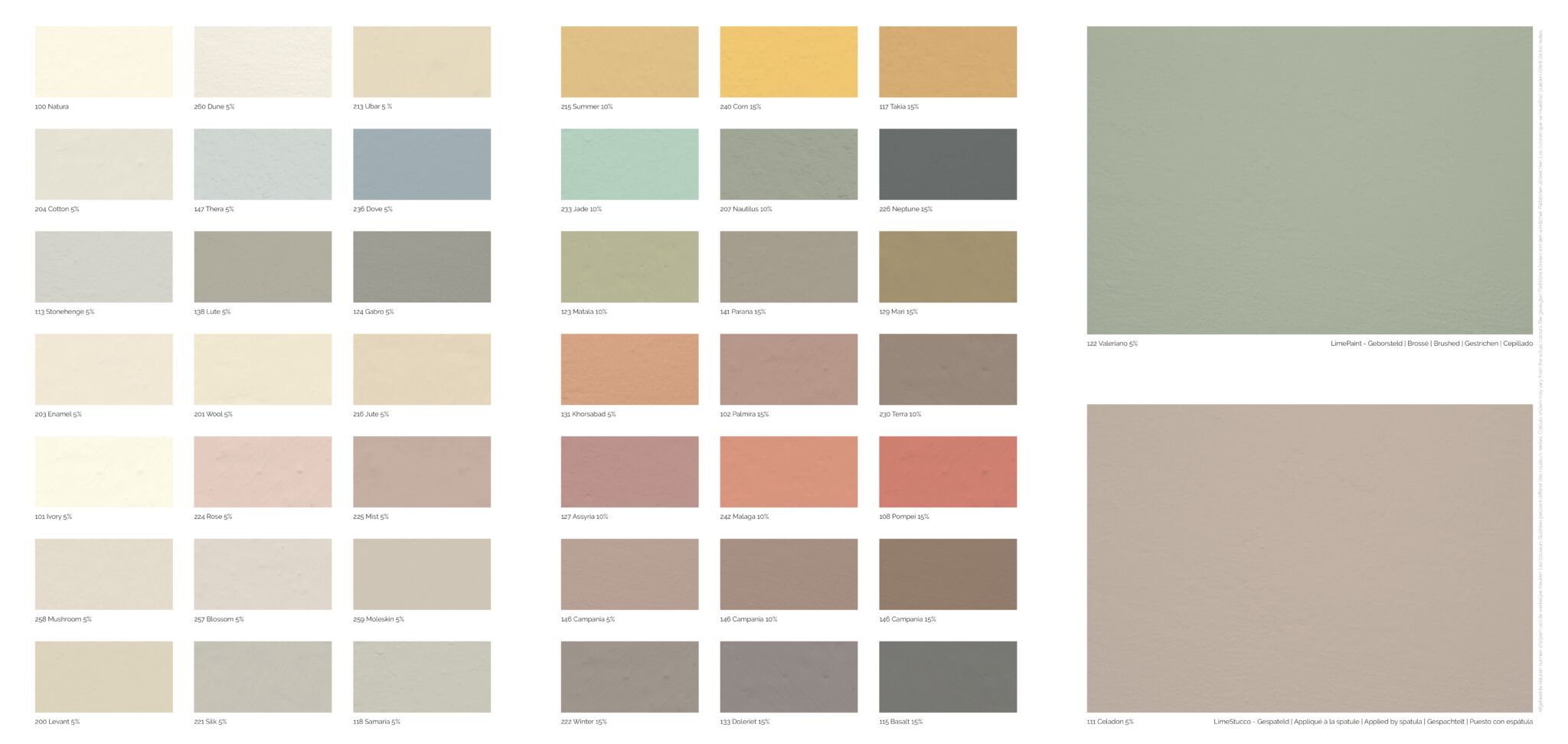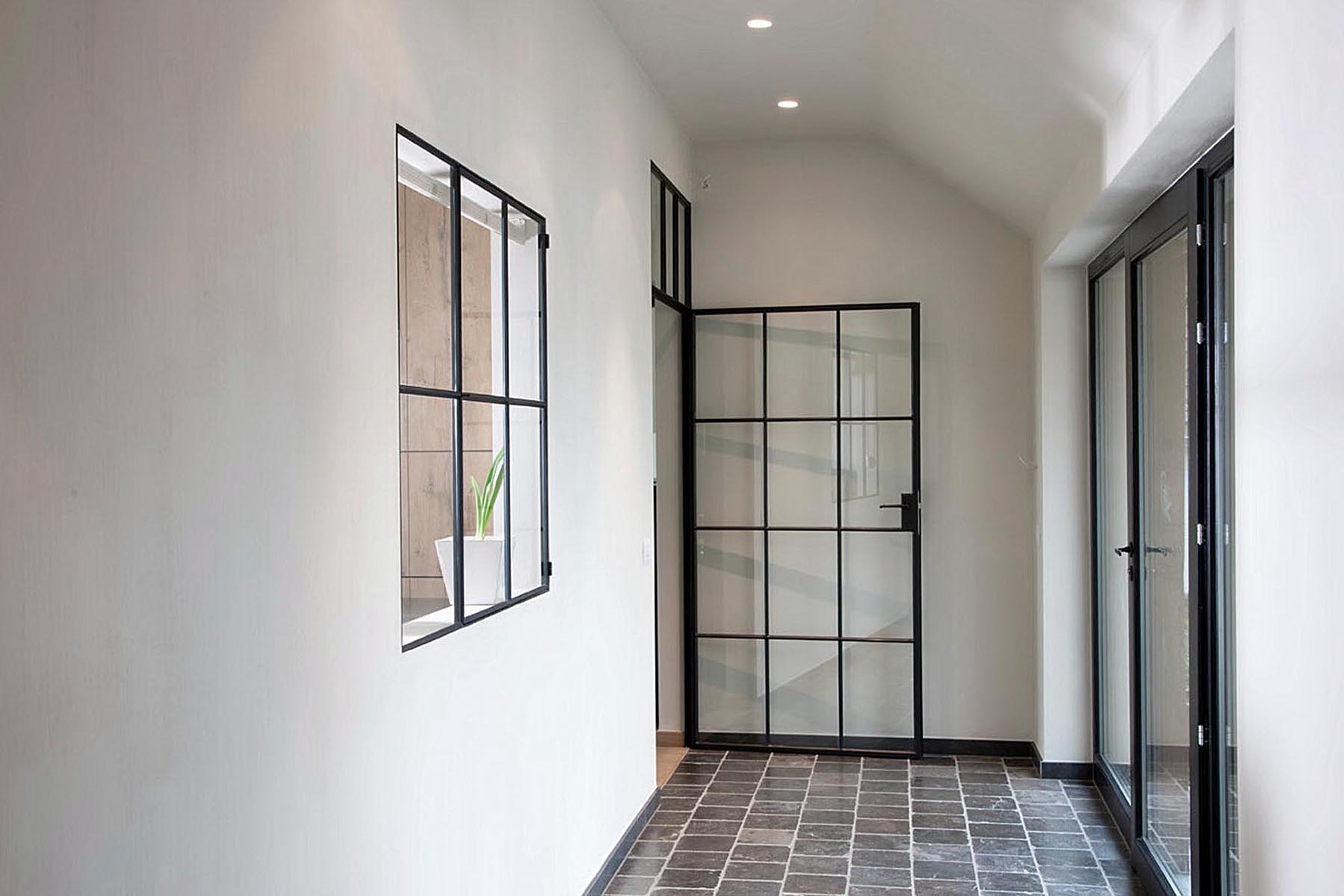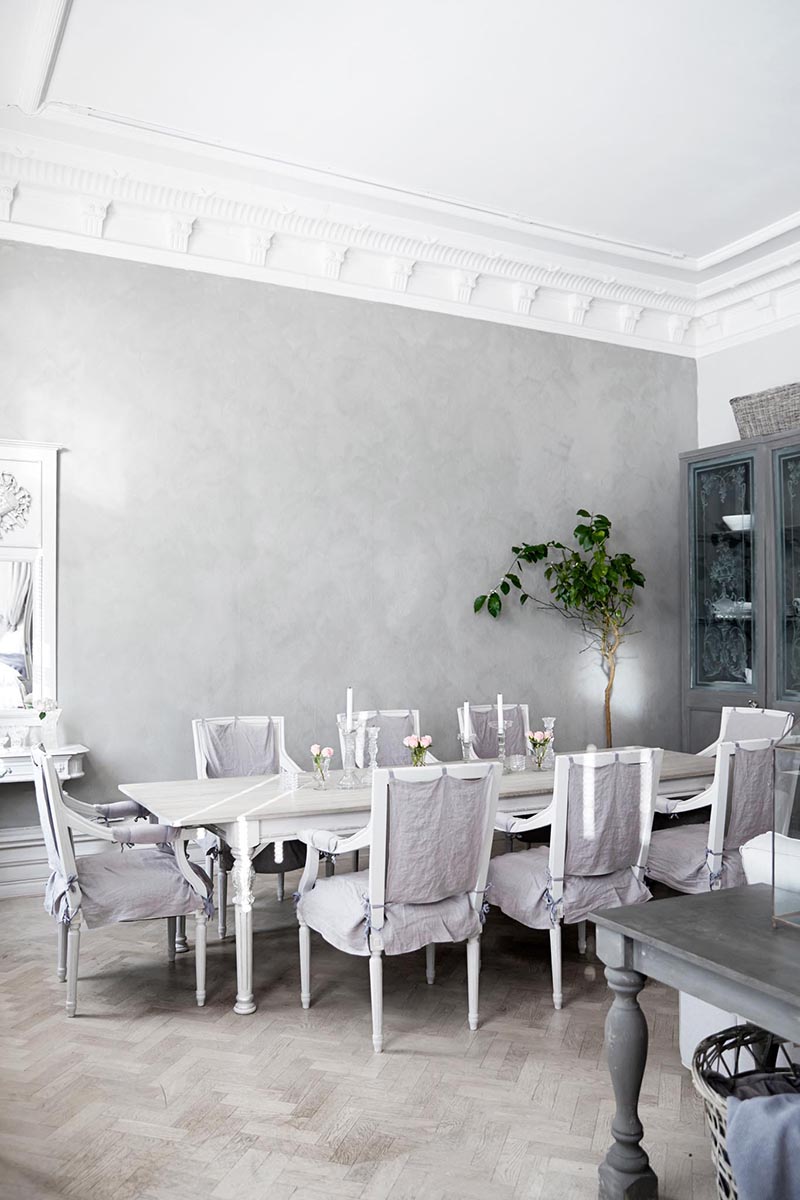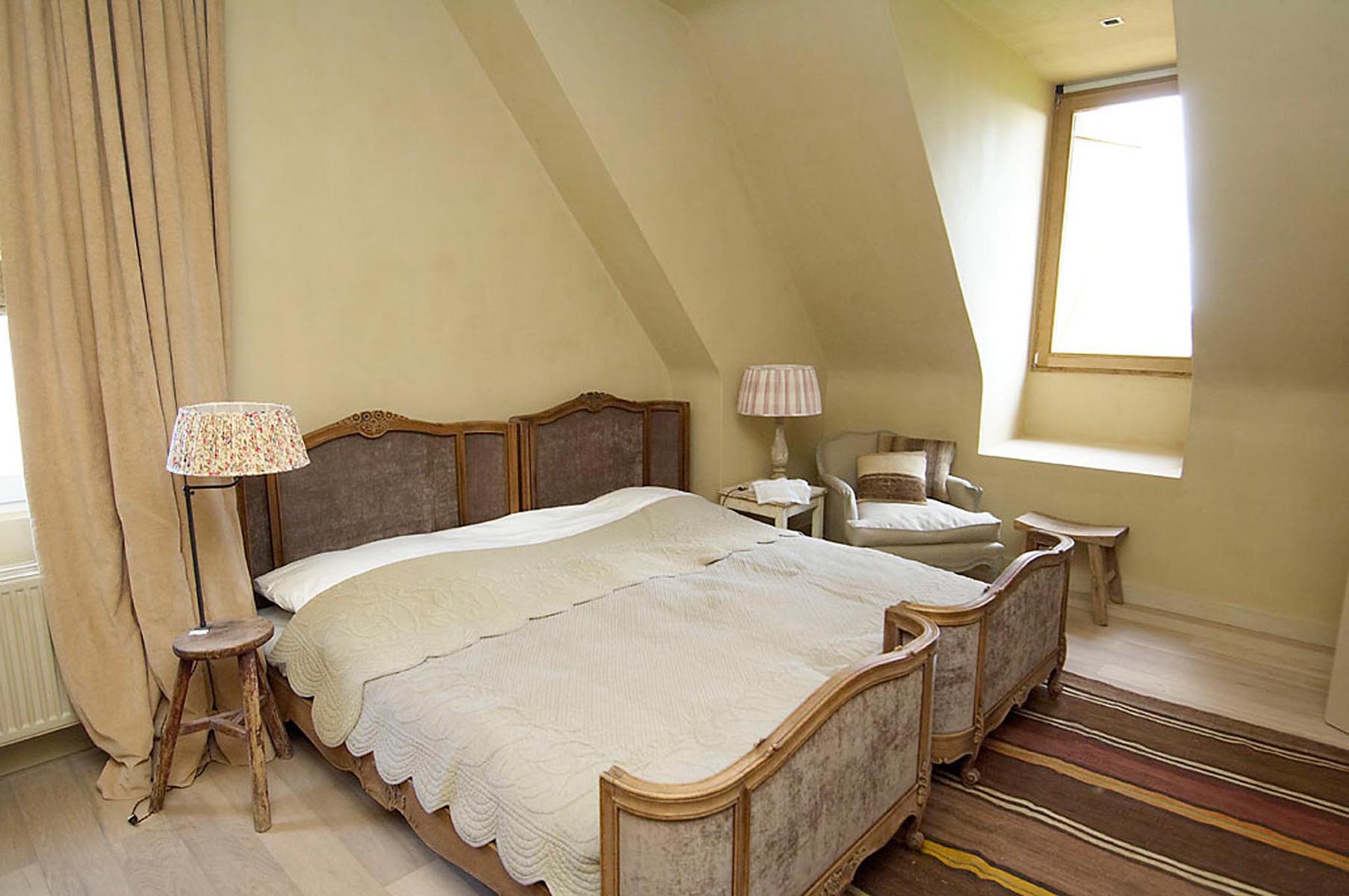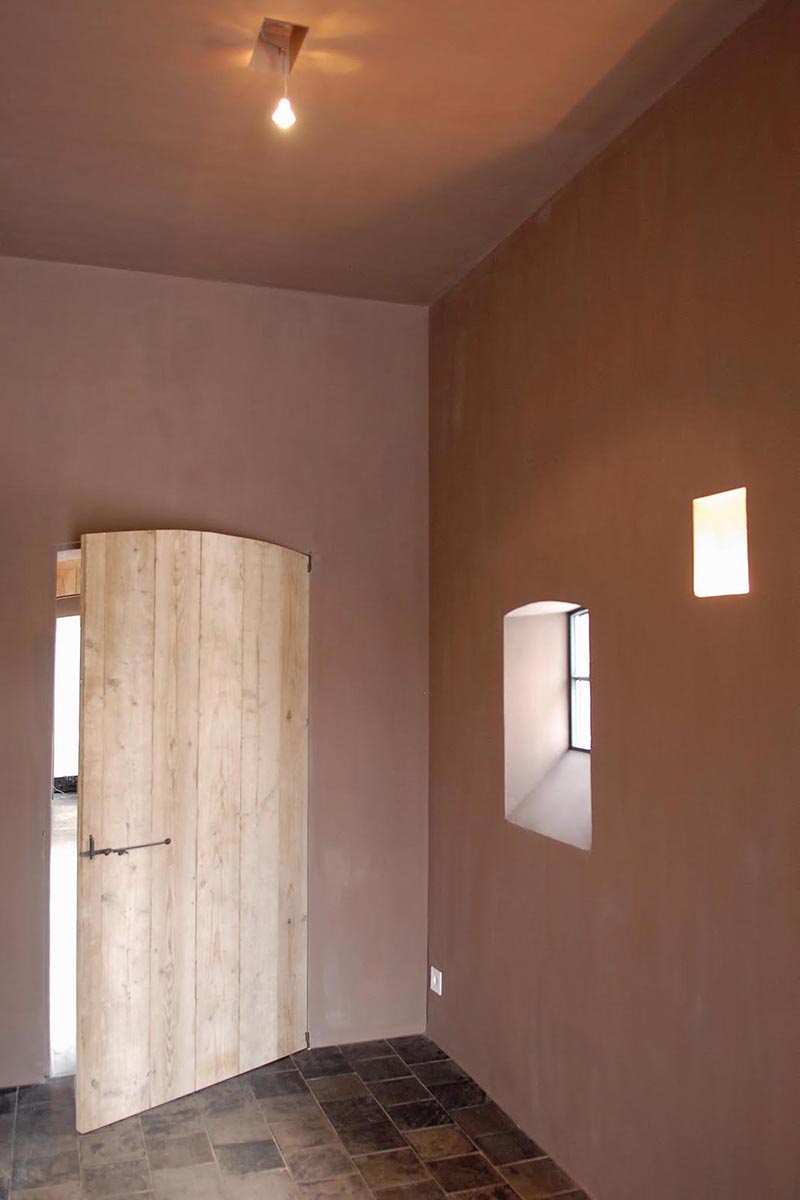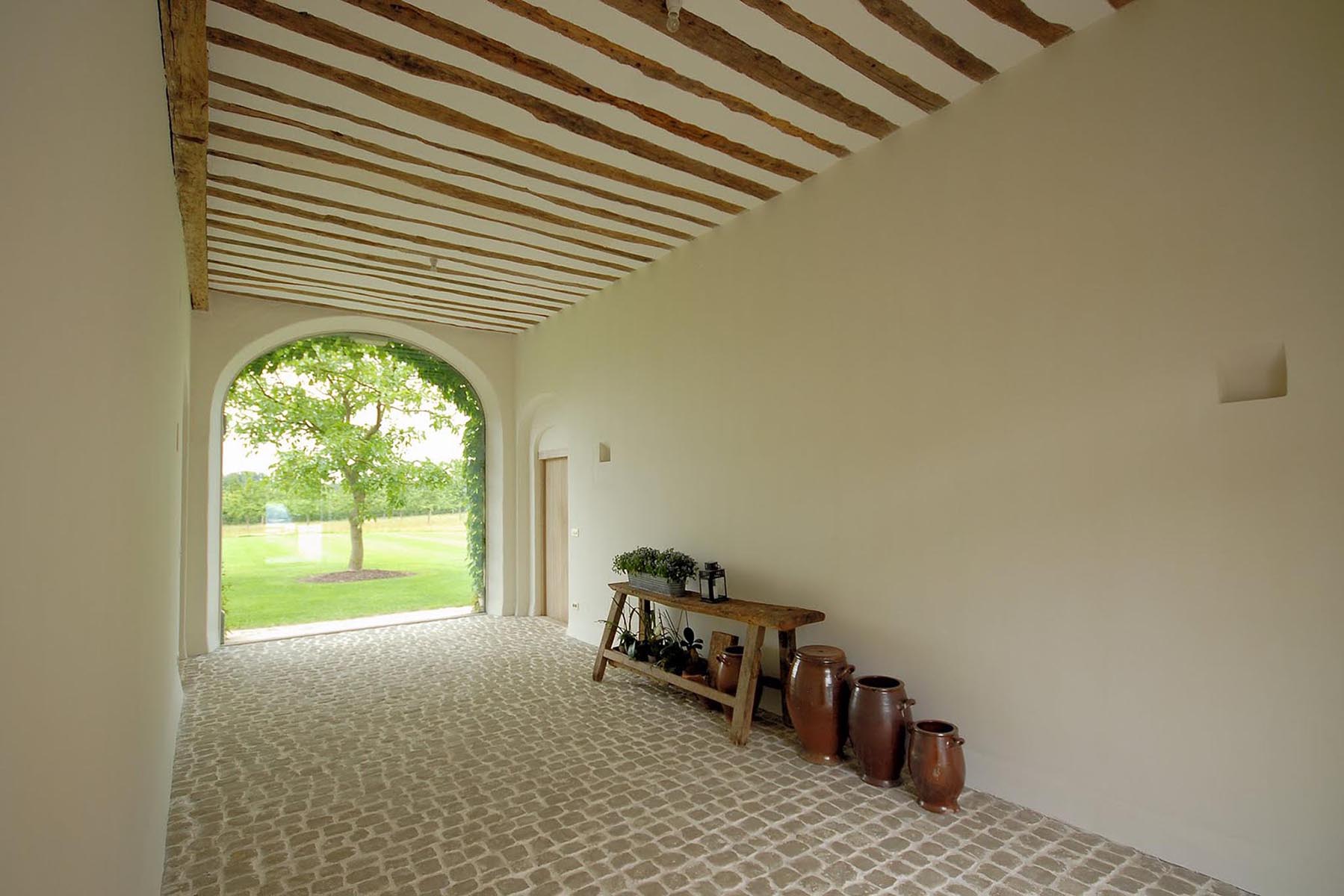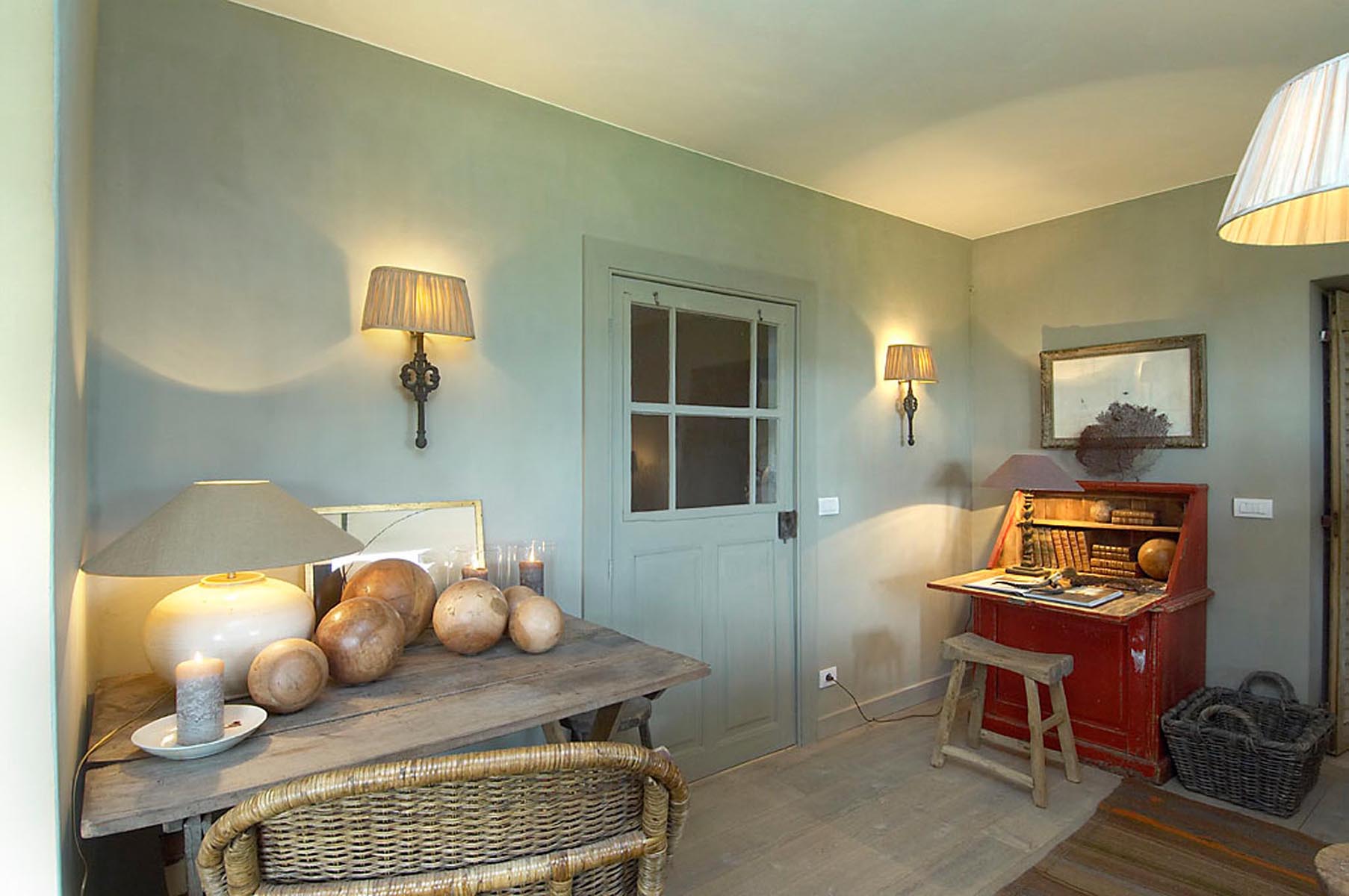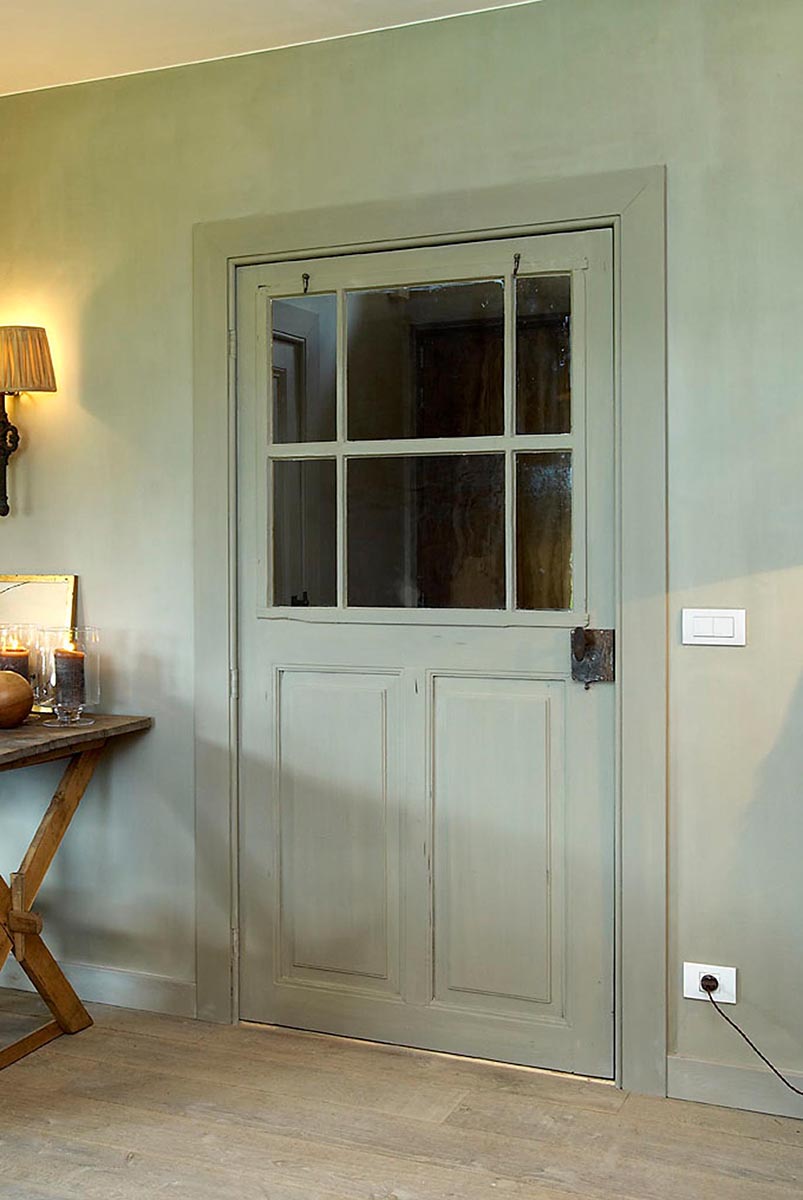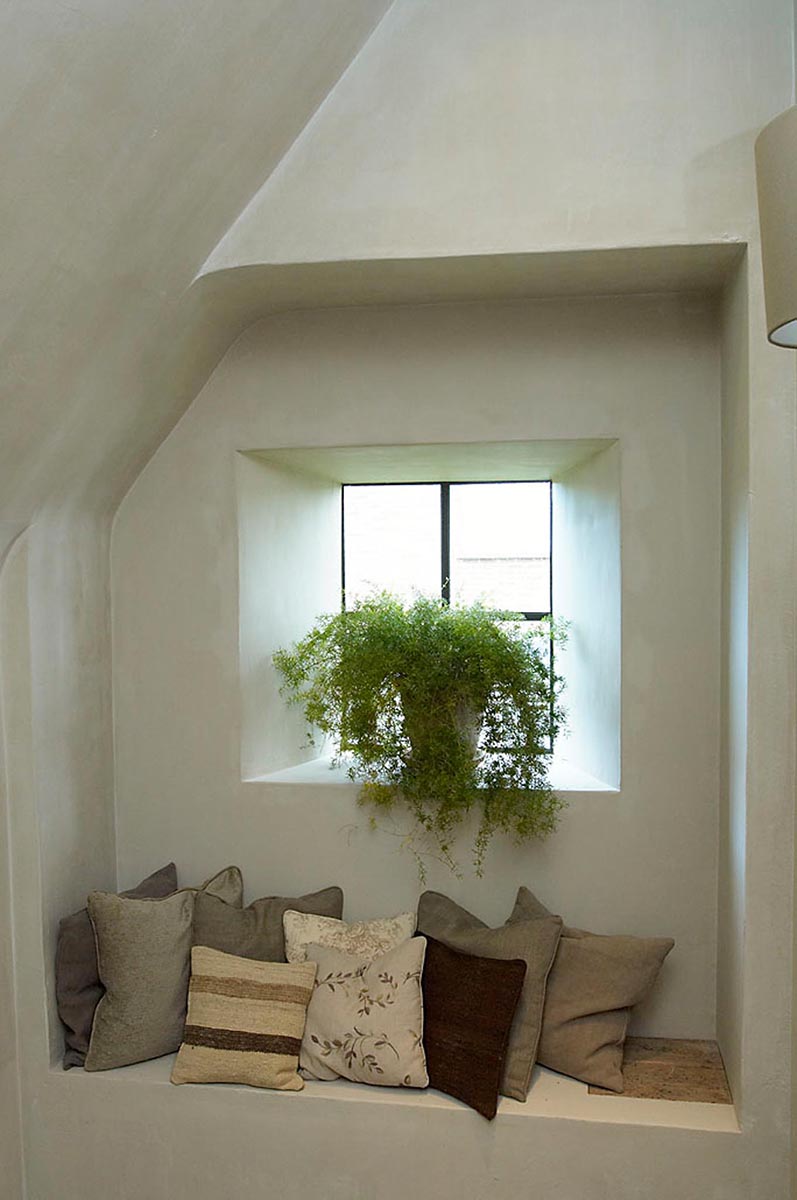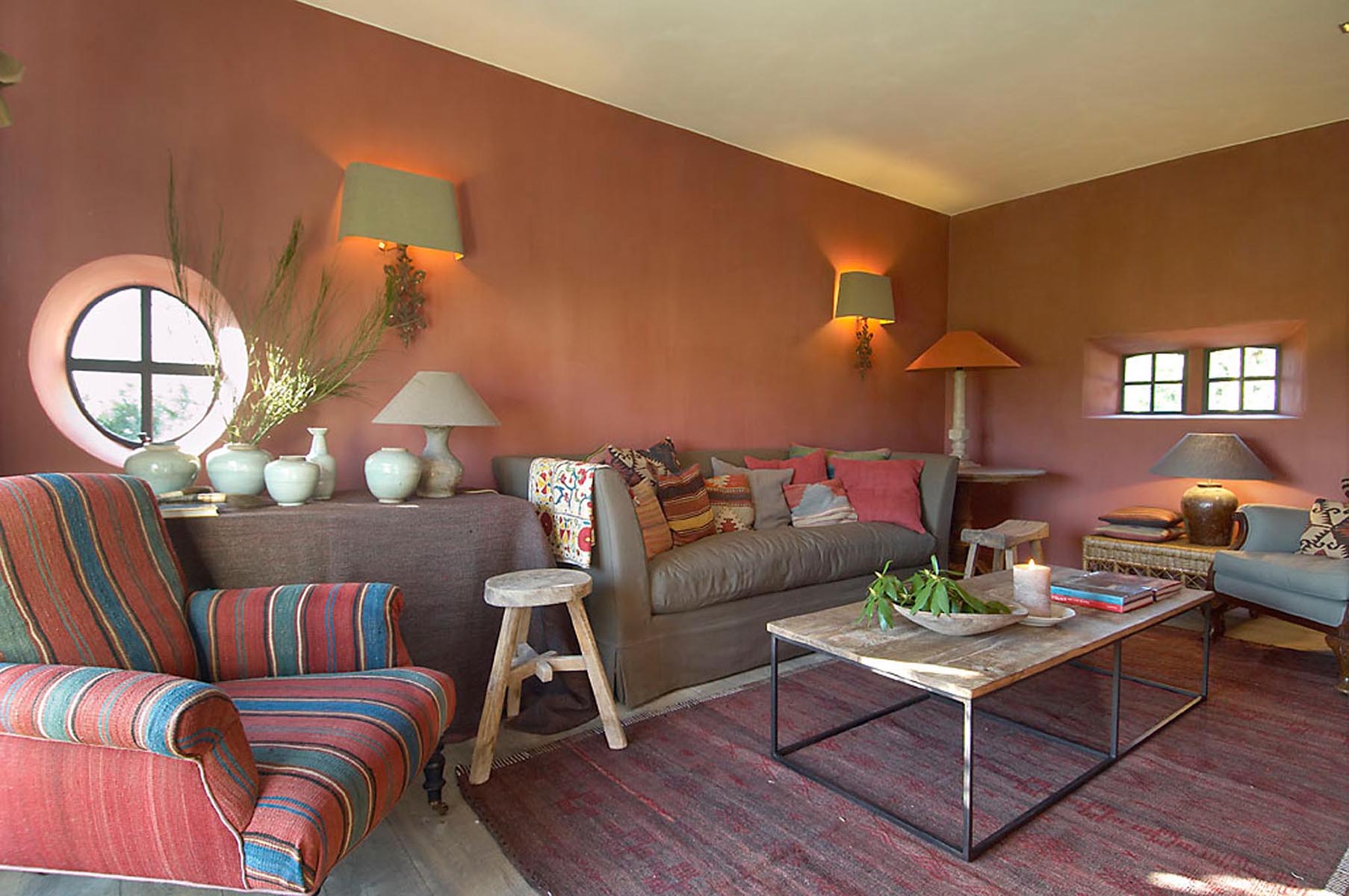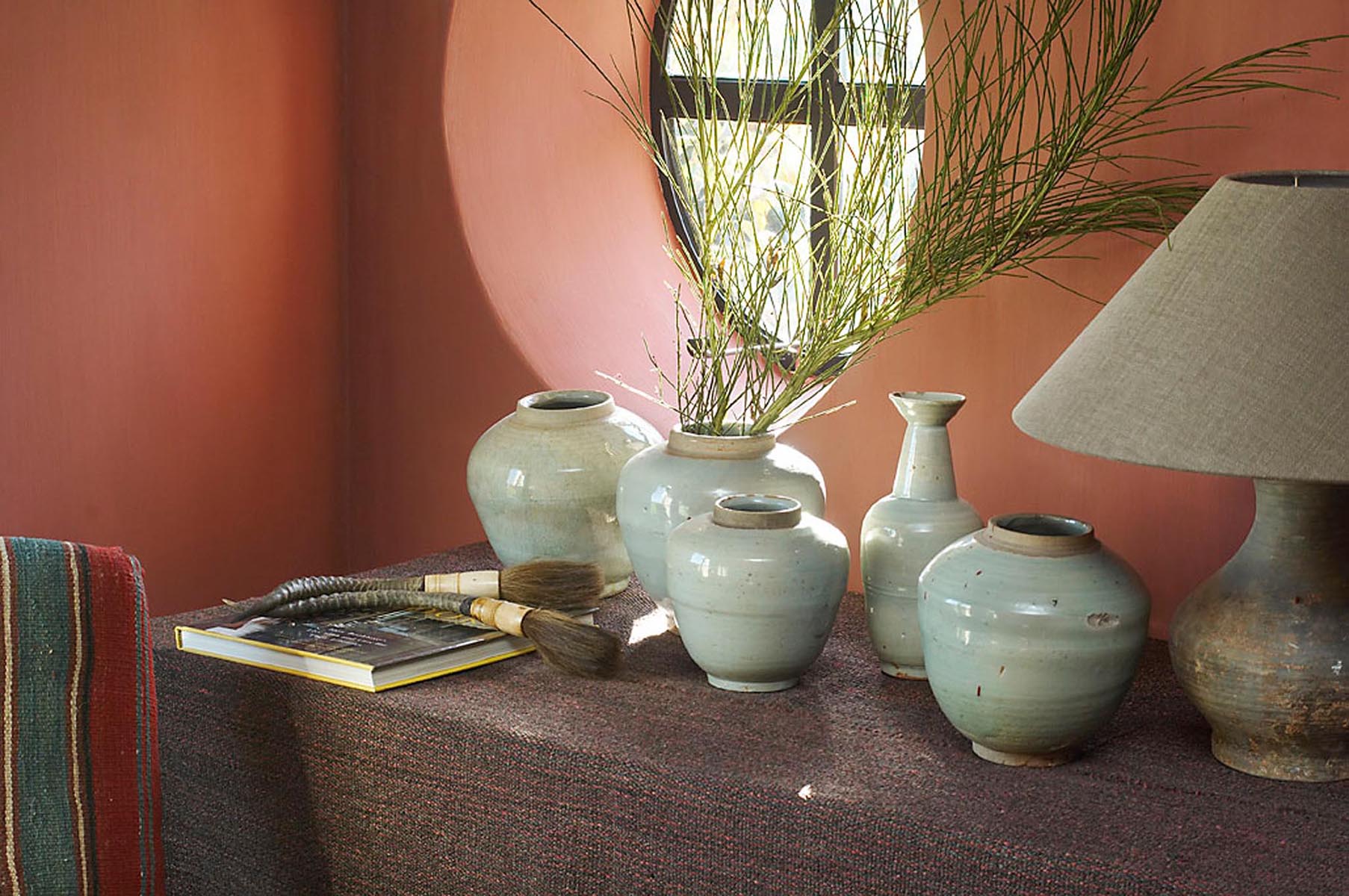LimePaint – LimeStucco
Artisanal, traditional walls that breathe
No two walls are ever the same with Lime Paint: the talent of the craftsman who applies the lime paint determines the uniqueness of the final result. His craft creates an authenticity which contributes to defining the building.
Premium quality
High moisture-regulating effect
Matt, mineral, environmental-friendly and durable
Fungicidal thanks to a high pH value
Enjoy your home with all your senses: silky soft walls with a natural look and feel and warm colours.
Lime paint is an integral aspect of the building in which it was used. It reveals traces of use and weathers over time. This means that Lime Paint can also give new walls that authenticity that no other decoration technique can achieve. As time passes, a weathered originality with tactility and warmth creates a cocoon where you always feel at home. Extra moods are added as the colour nuances vary with changing light intensities.
Lime was already used as paint hundreds of years ago, among other things due to its fungicidal properties. Lime Paint is often a requirement for listed buildings because they do not form a sealed film and walls can continue to breathe and move with the building. An additional benefit is that minor irregularities in the surface are levelled off instead of being highlighted. And of course, the traditional character and appearance of Lime Paint matches this kind of architecture perfectly.
The natural composition of Lime Paint is also reflected in its natural appearance: it’s literally ‘chalk matt’ and with harmonious and powerful colours. The painter’s hand creates an aesthetic result that depends on his specific way of applying, finishing and colouring the paint, and his unique effects. And despite this sophisticated approach, Lime Paint succeeds in bringing a glimpse of nature inside buildings and creating an exquisite space for relaxation.
Composition
Stoopen & Meeûs’ Lime Paint is manufactured from lime and pigments mined lime locally. The lime comes from natural sources whose deposits are self-replenishing. Moreover, our Lime Paint is VOC-free and is consequently one of the most ecological paints available.
However, the vapour permeability and breathable properties of Lime Paint make it more susceptible to pollution and the penetration of moisture.
On the other hand, the sealed surface of LimeStucco make this product extremely hard and less susceptible to damages. LimeStucco can be protected with a water-based varnish for applications with a risk of pollution. This is also possible with regular Lime Paint in principle, however, this will defeat the breathable nature of the Lime Paint.
With LimeStucco you can easily obtain the authentic look and feel of traditional Tadelakt.
Substrates
Just like any other mineral, breathable paint, the absorption power of the substrate affects the colour intensity, and Lime Paint will have colour nuances depending on this absorption power.
On interior walls, Lime Paint can be painted or stuccoed on all mineral substrates but also on old layers of paint, on wood, MDF, metal, etc., if the substrate is sufficiently stable and alkali-resistant.
Colours
The final appearance of a wall finished with LimeStucco is determined by the successive layers. A very smooth and even application of each layer ensures that the colour and texture of the final result will also be smooth.
The colour intensity and nuances of Lime Paint depend to a great extent on the substrate and the finishing. For example, the colour can be made darker by intensive brushing. All these factors contribute to the typical colour nuances of Lime Paint. In addition, polishing can give your stucco an attractive sheen.
In other words, various effects can be obtained depending on whether the Lime Paint is painted or stuccoed, with or without polishing, and optionally enhanced with a Tadelakt or Italian shine plaster look.
This means the colour chart is only indicative at all times.
For the professional
Technical data sheet UniWall Primer NF21
UniWall Primer NF21 is thé primer to use with our LimePaint and ClayPaint. It is a quick-drying universal, solvent-free primer for absorbent and non-absorbent substrates, suitable for finishing with alkaline products. You can use it on stony materials, cement and gypsum plaster, aerated concrete, concrete, silicate stone, wood, MDF, … It is not suitable for plastic and metal.
FAQ
Lime Paint must be protected at least 72 hours against moisture until it is completely dry.
Rain will certainly damage a fresh paint job using Lime Paint: white spots appear and the paint runs off. An extra coat of Lime Paint needs to be applied to fix this.
Moisture which is stationary for a long time may result in a white haze (bleeding). This white haze is subsequently dissolved when it rains and disappears.
New masonry always presents a risk for bleeding. Bleeding is caused by salts in bricks or cement which are brought to the surface with moisture. These salts penetrate the Lime Paint, which is breathable and moisture-permeable, and create a white haze when the water content evaporates.
Block formation can be avoided by:
- applying the paint haphazardly
- moistening the facade so you can apply the paint more easily
- diluting the second coat so you can apply the paint more easily (painting faster = less block formation).
Lime Paint is air-cured. Once the product has been mixed with water, the Lime Paint can be used for several months as long as it is stored in a tightly sealed packaging.
The drying time depends on several factors, such as climatic conditions, the layer thickness and the substrate, and ranges from half an hour to 6 six hours. In the event of mist or rain, it can take up to several days before a wall is dry.
The Lime Paint is dry when the colour turns lighter but this does not mean it is hardened. This is because Lime Paint is air-cured through carbonation which means that CO2 in the air will eventually petrify the paint. This process can take 1 to 3 months.
Applying Lime Paint in full sunlight or on hot or dried out substrates will burn the Lime Paint and reduces the bonding effect.
The coverage depends on
- the substrate
- the moistening of the substrate
- the dilution of the Lime and
- the painting technique
We recommend for a quotation
- indoors on smooth plastering: 1 kg to 2 kg per coat brushed per 10 m²
- outdoors on facades: 2 kg per coat per 10 m² unless a brush structure needs to be applied or deep joints make brushing the paint more difficult.
It is recommended to check the coverage when you start painting (after +/- 10 m²) and if necessary dilute the Lime further to adjust the coverage.
- Take the 8 kg bag of Lime Paint out of the bucket.
- Fill the bucket with minimum 8 litres of water – up to the white mark.
- Add 1 to 3 small cans of pigment (400 g) to the water and mix mechanically.
- To obtain a consistent mixture, start by adding 2/3 of the Lime Paint powder in the bucket (let the powder absorb) and mix at high speed until homogeneous.
- Then you can add the remaining Lime Paint and mix again until homogeneous.
- If necessary, add some more water until the paint has the desired consistency for the substrate and application technique.
FAQ
In addition to brushing techniques to create spots and colour nuances, you can also play with pigments:
- Colour nuances with brush technique:
The more intensive you brush, the darker the colour, and this means that Lime Paint applied with a brush always has colour nuances. - Incomplete mixing of pigments:
Incomplete mixing of Lime Paint results in a more ‘flamed’ effect when you brush it out. - Mix several colours::
First apply a base colour and then apply ‘wet-on-wet’ brush strokes with a different colour. Finish by softly brushing with the first brush.
LimeStucco can be polished with a stainless steel knife after it has firmed up (1-2 hours).
It is recommended to do this in successive steps during the drying process, depending on the desired result. You should never polish LimeStucco which has not firmed up sufficiently because this may cause the product to loosen.
The following polishing techniques are possible:
- Lime Paint – Brushed and polished:Apply 2 coats of Lime Paint with a block brush The Lime Paint can be polished with a stainless steel knife when it is completely dry. Areas on the surface begin to shine and are darker while the underlying areas remain matt and lighter. Brush structure is highlighted.
- LimeStucco – Even colour, smooth polished finished (Tadelakt look):Apply 2 layers with a stainless steel knife and skim each layer until smooth when firmed up. After the last layer, gradually press harder while polishing, in successive steps, until a completely smooth surface is obtained.
- LimeStucco – Colour nuances, smooth polished finished (Tadelakt look):
Apply 2 layers with a stainless steel knife, Apply layer 1 coarse and skim carefully after firming up (do not skim smooth). The second layer is applied to fill only the irregularities. After this last layer, gradually press harder while polishing, in successive steps, until a completely smooth surface is obtained. - LimeStucco – Colour nuances, course polished finished:
Apply 2 coarse layers with a stainless steel knife and skim carefully after firming up (do not skim).
After the last layer, let it firm up and then polish without smoothing. Areas on the surface begin to shine and are darker while the underlying areas remain matt and lighter.
Combinations of these techniques are also possible of course.
Outdoor facades:
Lime Paint cannot be painted over, unless you use Lime Paint. A thin coat of Lime Paint is sufficient to freshen up the colours and rejuvenate the old Lime Paint.
You can remove Lime Paint on certain substrates with a professional high pressure cleaner.
Indoor walls:
You can paint over Lime Paint if you first apply an alkali-resistant primer.
This depends to a great extent on the circumstances. A very dusty environment, running rainwater or dense vegetation tend to make surfaces painted with Lime Paint dirty much faster.
Lime Paint is a breathable, moisture-regulating and absorbing paint comparable to a mineral plaster.
After 5 to 7 years, or longer if a ‘Tuscan look’ is not an objection, the Lime Paint should be refreshed with a new coat of Lime Paint.
Lime Paint retains its attractive appearance if a water-repellent product is applied but then the typical aspect of the Lime Paint is lost. Moreover, you can only paint over it when this water-repellent product has practically disappeared.
Outdoor facades: the substrate must be:
- uniform
- mineral
- absorbent and
- free of dust, grease and other paint (except lime).
Non-homogeneous substrates may result in colour nuances due to varying absorption.
Facades with insufficient absorption (for example, certain facing bricks with low porosity <5%), will not absorb the Lime Paint sufficiently and this affects the bonding adversely. Bricks with low porosity should only be moistened slightly or not at all.
Indoor walls: Lime Paint can be applied on many substrates:
- high-absorbent substrates such as masonry, plastering, concrete, etc.
- non-absorbent substrates: old paint, wood, MDF, metal, etc.: it is recommended to apply a granular primer first.
Stoopen & Meeûs Lime Paint is suitable for outdoor use as facade paint if the substrate is mineral and unpainted. Besides its ecological character and the traditional look and feel, the product also has the following disadvantages:
- Lime Paint is a moisture-absorbing paint that attracts dirt more than other paint.
- Lime Paint starts to chalk after being exposed to outdoor air for some time.
- Lime Paint can only be painted over with Lime Paint.
The colour of Lime Paint is determined by:
- The absorption of the substrate.
High-absorbent substrates produce darker colours. These factors contribute to the typical colour nuances in mineral Lime Paint. This means the colour chart is only indicative at all times; - Mixing intensity
Intense mixing produces darker colours; - Prolonged brushing.Brushing also produces darker colours and more colour nuances.On non-homogeneous substrates indoors, a water-based alkali-resistant primer must first be applied so the absorption is uniform.
It is recommended to always apply a sample on the substrate to be painted and to inform your customer that colour nuances are normal with mineral Lime Paint.




